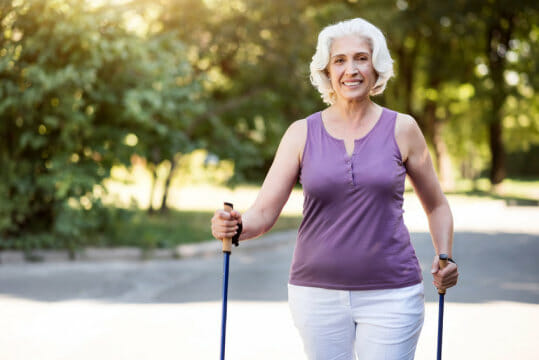Varicose Veins: Why Standing & Sitting are So Bad for You (and What to Do About It)
If you are worried about getting varicose veins, especially if they run in your family, then listen up.
There are things you can do to keep the veins in your legs healthy by making some changes in your everyday habits.
To answer the above question, can standing cause varicose veins? The answer is yes, standing for long periods of time can lead to this condition.
What are the causes of varicose veins?
When it comes to developing varicose veins, the risk factors run the gamut. Family history, aging, pregnancy, obesity, and leg trauma can contribute to their development.
What you might not realize is that standing and sitting all day at work or due to a generally sedentary lifestyle are also risk factors.
By putting excessive pressure on your legs, standing, and sitting for extended periods can cause blood to pool in your leg veins, which increases the pressure within the veins – weakening the walls of the veins and damaging the valves.
When this happens, veins can become varicose and cause venous insufficiency – making it more difficult for your blood to be pumped back up to the heart from your lower body.
Can you get spider veins from standing?
Sitting or standing for long periods can cause spider veins.
Like varicose veins, spider veins are formed when valves in smaller blood vessels don’t function properly.
As their name implies spider veins appear like spider legs on the surface of the skin and are smaller in diameter.
How Do You Prevent Varicose Veins When Standing All Day?
If you have a desk job or one that requires prolonged periods spent on your feet, varicose veins don’t have to be inevitable.
Here is a list of some things you can do to reduce your risk of getting varicose veins:
Wear compression socks
Compression stockings help squeeze the calf muscles around the veins. This helps to move the blood more easily back toward the heart.
Alternate between sitting and standing
If you have the option to get an adjustable-height desk or a standing desk that you can use with a taller chair, you can alternate between sitting and standing throughout the day.
Stretch out your calves
By doing standing calf raises, toe touches, or just flexing your calves, you can improve your circulation.
Perfect your walk-and-talk
If every time you answer a phone call, take a walk (even if it’s just within the confines of your cubicle), you can support the blood flow in your legs.
Loosen up
Tight clothing might look good, but it’s rarely good for you. By causing your body to contort in subtle, unnatural ways, it can restrict blood flow and increase your risks for developing varicose veins.
Movement
The National Heart, Lung, and Blood Institute (NHLBI) recommends adding physical activity to your healthy habits. Moving your body increases the heart rate, thus pumping more blood throughout your body and increasing its circulation.
Always check with your doctor before starting any physical activity to make sure you stay within a safe intensity level, time, and frequency.
Lighten the load
The NHLBI also suggests aiming for a healthy weight. If you are overweight, decreasing the number of pounds you carry will also decrease the amount of pressure on your veins in your legs.
Elevate
After a long day of sitting or standing for an extended amount of time, try reversing the gravity of blood flow in your legs.
Lie down with your legs elevated above your heart to help to decrease pressure and to drain the blood from pooling in your legs.
Procedures to ask Your Doctor to Help Treat Varicose Veins
If you have been diagnosed with varicose veins or chronic venous insufficiency and have not found relief from the self-care tips listed above, your doctor may recommend a procedure to help the veins in your legs.
Such procedures include:
Radiofrequency Vein Ablation – heat is used to seal the varicose veins to direct the blood to other healthy veins
Injection Sclerotherapy – instead of heat, vein specialists use a liquid or foam chemical to close off varicose veins
Ambulatory Phlebectomy – the removal of the vein or veins, also known as stripping the vein.
Take the Steps to Support Your Vein Health
Although not all varicose veins can be prevented, genetics does, after all, play a part in their development.
You can take preventive measures that will reduce your risk of developing varicose veins and/or spider veins.
By taking a balanced approach to your day, try including standing, sitting, walking, and stretching while you’re at work, you can keep your legs healthy now, and for years to come.
However, if you’re already seeing symptoms of varicose veins, we can help.
Visit us at vispdocs.com, or call 928.771.8477 for more information.
Vascular & Interventional Specialists of Prescott was formed in 2010 by a group of subspecialty radiologists that perform numerous minimally-invasive, low-risk procedures using the tools of our trade for guidance—x-ray, ultrasound, CT scan, and MRI. The team’s goal is to educate patients and medical communities, while also providing safe and compassionate health care, with rapid recovery times and low risk of complications.

